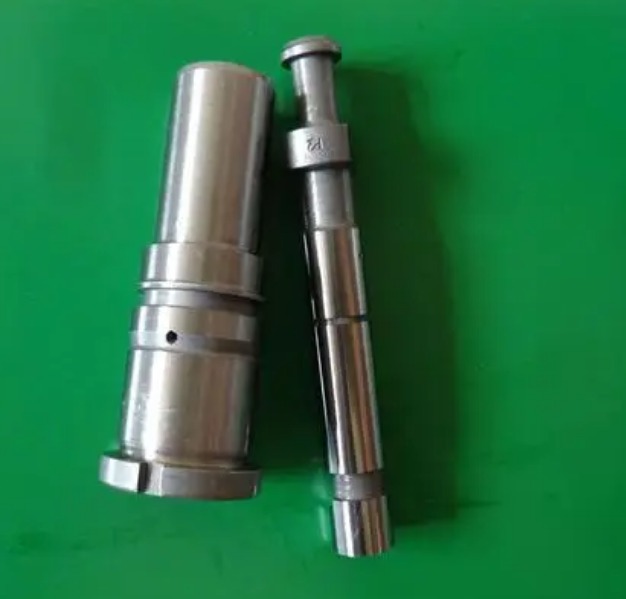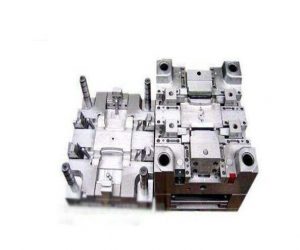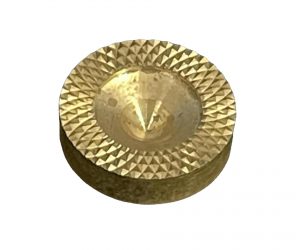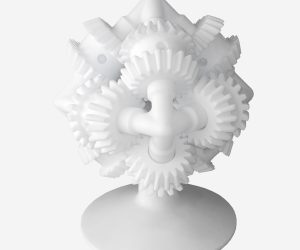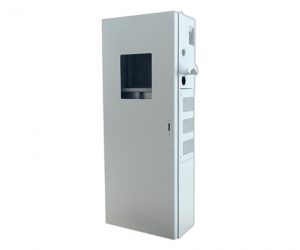Plunger injection molding: A nuanced exploration of its thermodynamic and rheological intricacies within the demanding landscape of thermoset processing. Unlike the comparatively pedestrian screw injection molding, predominantly relegated to thermoplastic domains, plunger molding confronts the recalcitrant nature of thermosets with a precision born of necessity. This technique, far from a mere alternative, represents a paradigm shift in the production of high-performance plastic components.
The inherent challenges posed by thermosetting polymers—their irreversible cross-linking reactions, demanding precise temperature control to avoid premature curing or degradation—are masterfully addressed by plunger molding's unique architecture. The absence of a shearing screw eliminates the potential for excessive heat generation and polymer chain scission, preserving the material's integrity and ensuring consistent rheological behavior throughout the injection process. This meticulous control translates directly into superior dimensional accuracy, a critical factor in applications demanding stringent tolerances. The resulting parts boast a surface finish of exceptional quality, reflecting the minimized shear forces and controlled flow regime.
Furthermore, the shorter dwell times characteristic of plunger molding mitigate the risk of thermal degradation, a significant concern with thermosets whose processing window is often narrow and unforgiving. This translates into reduced material waste and enhanced productivity, factors that significantly impact both the economic viability and environmental footprint of the manufacturing process. The reduced cycle times, a direct consequence of the optimized injection and curing processes, contribute to a markedly higher throughput compared to screw injection molding, making plunger molding economically compelling for high-volume production runs.
The extended lifespan of molds and tooling, a direct result of the lower processing temperatures and reduced shear stresses, further enhances the cost-effectiveness of this technique. The minimized wear and tear on mold components translate into substantial cost savings through reduced maintenance and replacement cycles.
The applications of plunger molding extend across diverse sectors, from the demanding environments of aerospace and automotive engineering, where high strength-to-weight ratios and exceptional thermal stability are paramount, to the intricate requirements of microelectronics and precision medical devices. The ability to consistently produce parts with complex geometries and tight tolerances firmly establishes plunger molding as a technique of choice for high-value components.
However, the specialized nature of plunger molding necessitates a thorough understanding of the material's rheological behavior and a precise calibration of processing parameters. Improper implementation can lead to defects ranging from incomplete curing and residual stresses to warping and dimensional inaccuracies. Therefore, a comprehensive assessment of the specific thermoset resin, coupled with rigorous process optimization, is crucial for successful implementation.
In conclusion, plunger injection molding transcends the limitations of conventional techniques, offering a powerful and versatile solution for the demanding realm of thermoset processing. Its superior control over material flow, reduced degradation, enhanced cycle times, and extended tooling life make it a compelling choice for high-volume production of high-quality, high-performance plastic components. The judicious selection and meticulous application of this technique unlock new possibilities in material science and manufacturing.
Plunger injection molding transcends the simplistic notion of merely injecting molten plastic into a mold. It's a high-pressure ballet of material science, engineering precision, and controlled chaos, yielding intricate components with a degree of detail often unattainable through alternative methods. This process, far from being a straightforward procedure, presents a fascinating interplay of thermodynamic forces and meticulously orchestrated movements, resulting in the creation of small, intricately detailed parts crucial to numerous industries.
The process itself begins not with a gentle introduction of molten polymer, but with a forceful, precisely regulated expulsion. Plastic pellets, initially a seemingly inert mass, are subjected to intense heat and pressure within the barrel of the injection molding machine. This isn't a passive heating; it's a carefully calibrated transformation, where the screw's action isn't merely pushing, but kneading and homogenizing the material, creating a viscous, homogenous flow. The plunger, far from a simple piston, acts as a high-pressure actuator, delivering a precisely timed and measured bolus of molten plastic into the mold cavity with a force that defies intuition. The mold itself, a marvel of engineering, is not merely a passive recipient, but an active participant, its intricate geometry dictating the final form of the component. The pressure exerted during this phase isn't merely sufficient for filling; it's a carefully calculated force, ensuring complete mold filling and preventing defects like short shots or sink marks. The subsequent cooling phase isn't a passive wait; it's a controlled solidification, where the precise temperature profile influences the final material properties, dictating everything from tensile strength to dimensional stability. Finally, the ejection of the finished component is not a simple release, but a precisely timed and controlled separation, preventing damage to both the part and the mold.
The diversity of plunger injection machines mirrors the complexity of the process itself. Categorizing them simply as single-cavity or multi-cavity machines is an oversimplification. Consider the variations: machines optimized for high-viscosity materials, those designed for ultra-precise tolerances, or those integrated with advanced monitoring systems capable of real-time adjustments based on process parameters. The choice of machine is not arbitrary; it's a critical decision based on the specific demands of the application, demanding a deep understanding of material properties, process capabilities, and production requirements. The inclusion of hot runner systems further complicates—and refines—the process, eliminating the need for sprue and runner systems, leading to reduced material waste and increased efficiency.
The advantages of plunger injection molding are not limited to simple cost savings or increased efficiency. The process's true strength lies in its ability to consistently produce parts with an unparalleled level of precision and detail. This capability unlocks possibilities in industries demanding extreme accuracy, such as medical devices, microelectronics, and high-precision automotive components. The automation inherent in the process not only increases throughput but also enhances consistency, minimizing variability and ensuring a high degree of quality control. The reduced material waste, a byproduct of the precise injection process, contributes to a more sustainable and environmentally responsible manufacturing approach. In essence, plunger injection molding represents a sophisticated and highly effective manufacturing technique, crucial for producing components demanding both precision and high-volume production.
What is Plunger Injection Molding?
Plunger injection molding is like using a super-strong syringe to squirt melted plastic into a mold It's a metal rod with a nozzle that perfectly fits the mold opening, letting you control how much plastic goes in and how fast
It's a bit different from screw injection molding, which is more common Think of it like a mixer that melts and mixes the plastic before injecting it Screw molding is great, but it can waste more material, stress the plastic more, and sometimes isn't as precise
Plunger molding is awesome for making parts with tricky shapes, super-thin walls, or when you need things to be really exact It also works with lots of different materials, like plastics, thermosets, rubbers, and even metals
How Does Plunger Injection Molding Work?
The plunger injection molding process consists of three basic steps:
- The plunger is placed into the mold and the resin is injected. The resin is heated and melted in a separate chamber before being transferred to the plunger. The plunger then pushes the resin through the nozzle into the mold cavity. The pressure and temperature of the resin can be adjusted by controlling the movement of the plunger.
- The plunger is then removed and the mold is clamped shut. The resin cools and solidifies in the mold cavity, taking the shape of the mold. The cooling time depends on the size and thickness of the part, as well as the material properties.
- The molded piece is then removed from the mold. The mold can be opened manually or automatically, depending on the type of machine. The molded piece can be ejected by using pins, air jets, or vacuum suction. The part can then be trimmed, finished, or assembled as needed.
Types of Plunger Injection Machines
Plunger injection machines come in three common types: straight injection, recirculation, and transfer.
- Straight injection machines use a single plunger to inject the resin directly into the mold cavity. This type of machine is simple and fast, but it has limited control over the resin flow and pressure.
- Recirculation machines use two plungers to inject the resin into the mold cavity. One plunger feeds the resin from the heating chamber to a holding chamber, where it is stored until needed. The other plunger injects the resin from the holding chamber into the mold cavity. This type of machine allows for more precise control over the resin flow and pressure, but it also requires more space and maintenance.
- Transfer machines use a plunger to inject the resin into a transfer chamber, which then feeds it into multiple mold cavities. This type of machine can produce multiple parts at once, but it also requires more complex molds and higher clamping force.
Advantages of Plunger Injection Molding
Plunger injection molding has several advantages over other types of injection molding, such as:
- Higher accuracy and precision: Plunger injection molding can produce parts that have complex shapes, thin walls, or tight tolerances with minimal defects or variations.
- Lower material waste: Plunger injection molding uses less material than screw injection molding because it does not require a runner system or a cold slug well. This reduces material costs and environmental impact.
- Lower stress on the plastic: Plunger injection molding creates less shear stress on the plastic than screw injection molding because it does not mix or compress the plastic before injecting it into the mold. This results in higher-quality parts that have better mechanical properties and appearance.
- Higher flexibility: Plunger injection molding can handle a wide range of materials, from thermoplastics to elastomers to metals. It can also produce parts that have different colors or textures by using different resins or additives.
Conclusion
Plunger injection molding is a really cool way to make high-quality plastic parts with all sorts of shapes and sizes It uses a plunger to shoot melted plastic into a mold, where it hardens This method is great because it's super accurate, wastes less material, is gentler on the plastic, and gives you lots of options You can use different machines to do it, like straight injection, recirculation, or transfer machines If you need a reliable and efficient way to make your plastic products, this might be perfect for you
